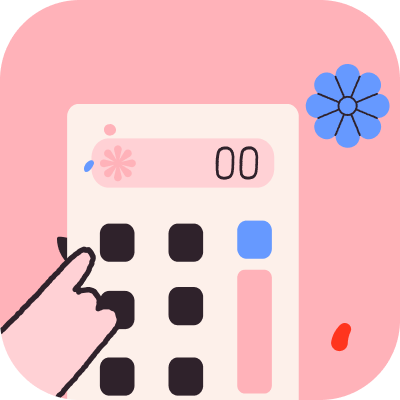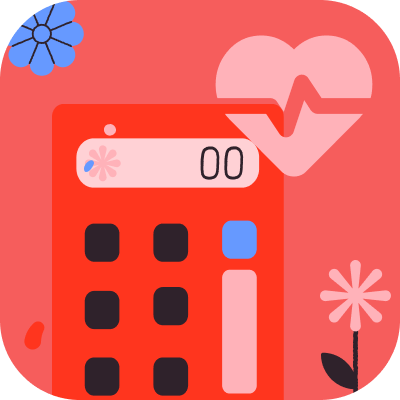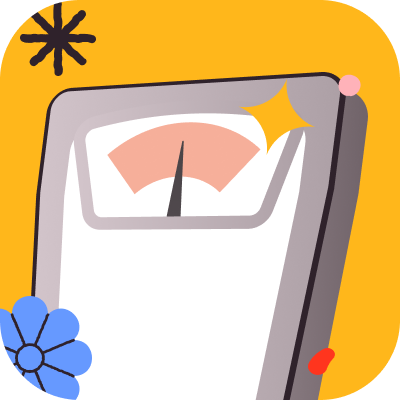When you have a good vision or goal in mind, you tend to devote all your attention to achieving them - creating goals and plans for what you want to achieve and where you want to be in the short term and long term can help improve how you see yourself, and in turn, how others see you. In this article, we will discuss personal development, its importance, key areas for improving it, and how to create your own personal development plan along with a PDP template.
What is Personal Development Plan?
Do you want to turn your dreams and aspirations into reality? If yes, then continue reading.
Personal Development is defined as the process of improving yourself through conscious habits and activities. It is the pursuit of growth to enhance your life and achieve your dreams and aspirations. However, most of the time, we harbour our dreams, yet we are rarely able to achieve it, and that’s where creating a personal development plan works.
A personal development plan helps you understand where you are headed and how to reach your goals in a systematic manner. It is the process of building your self-growth with all the resources available at your disposal.
Why do you need to make one for yourself?
For most people, attention, and commitment become a waste if they do not have a defined set of goals to achieve. Think about how organizations work. Most organizations are buttoned up with a mission statement, a vision of how to get there, and quarterly and weekly goals to ensure they’re pacing towards that goal.
A personal development plan works the same way, however it doesn’t have to feel like work. With a personal development plan, you can identify where you are currently and which way to direct your attention to improving the quality of your life. You can also define the kind of person you want to become, the skills you want to develop, and the accomplishments you want to achieve within designated timelines.
A personal development plan gives you clarity on your current standing, and you’re able to identify where to direct your attention and awareness moving forward. Defining a proper plan gives you peace of mind that you are going in the right direction and focusing on a clear benchmark. Hence, a self-development plan is critical and helps you make deliberate efforts to improve your life.
Key areas of Personal Development
While personal development focuses on your overall growth, there are some key areas that can help create powerful habits that you must focus on.
- Personal skills: You may already have an idea of your standing here. These can also be called “soft skills.” To improve your relationships with people around you, to be able to influence people, and generally communicate, personal skills are what differentiate you from the rest.
- Personal growth: Personal growth refers to improving yourself, stepping out of your comfort zone, and focusing on becoming a better version of yourself. We tend to continuously evolve and grow through our own experiences, by observing the experiences of others, or simply reading.
- Personal power: The authority that others believe you to have in various situations because of your knowledge, contacts, or relationships is your personal power.
- Personal empowerment: Promoting a positive image and imbibing creativity in your life helps in empowering your personality. You speed up the time taken to achieve your goals and look for quicker ways of getting things done. You believe in yourself and have positive self talk, self-respect, and self-confidence.
- Personal objectives: Your ambition would be a waste when there are no clear goals to look forward to. Hence, it is important to develop short-term and long-term objectives. With personal objectives in place, you will have a clear strategic plan to reach your desired goals.
- Personal analysis: It is critical to be mindful of the areas you are naturally gifted and analyze areas that need improvement. This analysis helps evaluate your personality in relation to where you are and where you want to reach. One book that has helped me realize where I’m gifted, and where my frustrations lie, is the 6 types of working genius. You can even visit their website, and watch the short video to get the gist of where you may lie here.
How to Create your Personal Development Plan: Step-by-Step Guide
The process of building a PDP takes a considerable time. Follow this step-by-step plan to streamline your personal development plan.
Step 1: Dream and create your vision
To build your personal development plan, you need to start with an end goal in mind. Choose a timeframe that suits you and try to achieve all your goals within that. Your vision will inspire you to create more goals and achieve more in life. Imagine your life ten years from now, and jot down answers to the following questions:
- What is the first thing you should do in the morning?
- What does your ideal day look like?
- How is your day structured?
- What keeps you motivated to move forward?
- What makes you feel accomplished in life?
When you can craft a full story around these questions, you will clearly understand how your life looks and how you can determine your values. Hence, it is critical to create a vision for life because it helps take deliberate steps to move forward and improve your productivity. Know that there is no wrong answer. Do not judge yourself. If your answer is “I want to become filthy rich so I can buy whatever I want, and have the ultimate freedom.” That is a fine answer. Just figure out HOW you can accomplish that. Learn the rules of success. What does the market need that it doesn’t know how to get? Where can you add value or solve a problem and viola! You will be rich.
Step 2: Outline your areas of focus
With clear goals, it is now time to focus on your development with all the resources at your disposal. You need to create a strategic personal development plan with the key areas to focus on achieving your goals. Select the areas that interest you the most and then narrow down your search. Plan your learning for a month or two and then analyze all your options.
You need to understand your existing strengths and skills and then work towards gaining new ones. When you have a list of skills to work on that can take you closer to achieving your goals, you will be able to create an achievable plan.
Step 3: Analyze your strengths and weaknesses
While setting your goals and creating your personal development plan, it is important to analyze your strengths and weaknesses. Do a SWOT analysis (shown below) and organize your thoughts to keep your plan relevant to the growth you want to achieve.
Focus on skills that need your attention and plan ways of turning your weaknesses into strengths. Consider these questions to understand your strengths and weaknesses.
Strengths
- Why do people praise you?
- What sets you apart from others?
- What is your biggest contribution till date?
- What values are most important to you?
- Why do people come to you for help?
Weaknesses
- Where do you lack?
- What keeps you from working on that?
- Why do you procrastinate on your tasks?
- What kind of tasks do you usually procrastinate on?
- What prevents you from achieving your goals?
Opportunities
- How well-versed are you with different skills?
- What are the resources available to learn new skills?
- How can these skills help you become better professionally?
- How can you seek help from your friends and family?
Threats
- What are the challenges of not learning new skills?
- What are the skills where you lack confidence?
- What might prevent you from reaching your goals?
- What other limitations you may face in achieving your goals?
Step 4: Establish your goals
Most often, people set unrealistic goals when creating a personal development plan. In today’s war of distraction, it is very essential to stay productive, and hence you should set mini and realistic goals. When you have a clear direction and all goals planned, it is time to get down into the specifics of establishing your goals.
The key is to get specific about all your actions for the future. You should develop weekly goals like finishing an assignment, to annual goals like increasing your sales by 20% percent. With your goals defined, you can allocate your time and resources to getting your goals into action.
One quick tip is to focus on SMART goals.
S- Specific
Make specific goals that are detailed and clear, instead of being broad and general
Example- I want to become a top 1% performer within our sales group
M- Measurable
Set milestones that can help you measure your growth
Example- To aim for a 10% month-on-month increase in my sales pipeline
A- Achievable
Make goals that are practical and can be achieved, instead of being dreamy about the goal setting
Example- To feel more confident and equipped with the latest skills
R- Relevant
All your goals should be in alignment with your overall personal development plan
Example- I enjoy learning, and sales, and this will push me to earn more income while doing something I enjoy.
T- Time-bound
All your goals must have an end date to help you achieve them on time
Example- To measure my sales results at the end of 1 year to see how I did.
Step 5: Set your schedule
Once you have mastered the steps listed above and have a clear picture of your goals, ensure that you block off sufficient time for making progress. Most often, people struggle with scheduling for two reasons. First, they underestimate the time taken to do a particular job. Second, you tend to procrastinate your work till the last minute. Follow some practices to overcome procrastination and be practical in your assessment.
You need to reasonably assess the time taken for a particular task and carve out your plan with minimal distractions. The key is to be consistent with your schedule and establish a daily practice. If you are struggling with managing your time, these time management techniques will come in handy and help you achieve more in less time.
Further, you must always follow the Golden Hour Rule - beginning your day early and investing the first couple hours of the day in your personal development plan.
Step 6: Monitor your progress
Feedback facilitates learning. While it is essential to create achievable plans, it is equally important to frequently review and monitor your progress. When you work with a fixed mindset without any scope for modifications in your plan, you tend to overlook some feedback. Instead of avoiding these feedbacks, it is important to accept failures and mistakes as part of learning.
Moreover, with constructive feedback, you bring in more awareness to your work and achieve more. You need to keep an eye on your progress and review it frequently. When you review your work, you get a deep understanding of what has worked and what needs to be improved. You should not hesitate to modify your plan according to new interests and changes. As the author and motivational coach Tony Robbins says, “Stay committed to your decisions, but flexible in your approach.”
Step 7: Persevere for the betterment
Along with monitoring your progress, it is very important to put continuous efforts in achieving your goals. Whether you are a student or a working professional, you need to always persevere for betterment. With regular efforts and continued focus, you can easily achieve all your goals and develop your personal growth.
A PDP Template
Sometimes, you tend to miss points in your head. Hence, it is important to have a visual picture of your personal development plan. You can use this personal development template and jot down all your goals in this template and use this for a visual mind mapping. With a handy template to refer to, you can checklist your goals and also keep easy track of your progress.

Takeaways 
With a solid PDP in hand, you can improve your chances of achieving your truest potential! You get to decide the actionable steps to achieve your goals and not just shoot in the dark. You commit yourself to lifelong learning and improving yourself. By following the steps mentioned above and focusing on your key areas of improvement, you can turn your dreams into reality. Moreover, with improved productivity and a range of accomplishments, you will open up to a growth-oriented future.
































